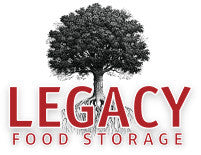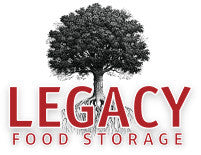Wardrobe Survival Kit
 When it comes to emergency preparedness we talk a lot about the importance of survival kits and how they can be created and used for everything from first aid to search and rescue. It’s well known that natural disasters can have devastating effects on man made and natural environments, but it’s probably less well known that many of the injuries people sustain actually happen in the aftermath of an event.Think for a minute about an image of a devastated area. What does that scene look like? Buildings reduced to rubble, downed power lines, broken glass, blocked roads. It’s scenes like this that made me start to think about a different kind of survival kit—one dedicated solely to a disaster wardrobe, if you will, that would not only help me in such a situation, but also protect me from further harm or injury. What I’m about to reveal might appear to be unbelievably obvious, but on occasion it’s the very obvious things we tend to forget about.Heavy Boots: Moving around through a devastated area means you’ll likely experience a lot of objects that could easily pierce the sole of a regular shoe, or that may cause you to loose your footing or roll an ankle. Much like being on a high alpine trail, heavy, rugged boots will help you navigate this unpredictable terrain while safeguarding your most reliable mode of transportation.Leather Gloves: Mandatory for any working man, thick leather gloves is the quintessential way to protect your hands from objects that are sharp, hot, prickly, jagged or otherwise meaning to do you harm if you were to pick it up with a bare palm. Since gloves are not only important but also affordable, you’ll find several pair in my survival kit.Thick Work Jeans/Overalls and Coat: Are you seeing the theme here? These are all durable, resilient items that are made to last, even under extreme duress. Protect your legs and arms with heavy material that won’t easily rip or tear. When in doubt, you can’t go wrong with Carhartt’s.Dust/Hazmat Mask: Damaged or destroyed structures, especially older ones, often release a lot of harmful chemicals (like asbestos) into the air that have the potential to cause pulmonary complications. Keep a mask with the rest of your survival kit wardrobe to ensure the safety and health of your lungs. Remember that in order to help others in the aftermath of a disaster it’s critical to do everything you can in order to first protect yourself from harm or injury. A secondary survival kit of ‘aftermath’ clothing may not always be necessary, but then again, what will it hurt to stow these items away. Besides, chances are good that this kind of clothing survival kit can be made from stuff you own already, making it not only a good idea, but a free one as well.
When it comes to emergency preparedness we talk a lot about the importance of survival kits and how they can be created and used for everything from first aid to search and rescue. It’s well known that natural disasters can have devastating effects on man made and natural environments, but it’s probably less well known that many of the injuries people sustain actually happen in the aftermath of an event.Think for a minute about an image of a devastated area. What does that scene look like? Buildings reduced to rubble, downed power lines, broken glass, blocked roads. It’s scenes like this that made me start to think about a different kind of survival kit—one dedicated solely to a disaster wardrobe, if you will, that would not only help me in such a situation, but also protect me from further harm or injury. What I’m about to reveal might appear to be unbelievably obvious, but on occasion it’s the very obvious things we tend to forget about.Heavy Boots: Moving around through a devastated area means you’ll likely experience a lot of objects that could easily pierce the sole of a regular shoe, or that may cause you to loose your footing or roll an ankle. Much like being on a high alpine trail, heavy, rugged boots will help you navigate this unpredictable terrain while safeguarding your most reliable mode of transportation.Leather Gloves: Mandatory for any working man, thick leather gloves is the quintessential way to protect your hands from objects that are sharp, hot, prickly, jagged or otherwise meaning to do you harm if you were to pick it up with a bare palm. Since gloves are not only important but also affordable, you’ll find several pair in my survival kit.Thick Work Jeans/Overalls and Coat: Are you seeing the theme here? These are all durable, resilient items that are made to last, even under extreme duress. Protect your legs and arms with heavy material that won’t easily rip or tear. When in doubt, you can’t go wrong with Carhartt’s.Dust/Hazmat Mask: Damaged or destroyed structures, especially older ones, often release a lot of harmful chemicals (like asbestos) into the air that have the potential to cause pulmonary complications. Keep a mask with the rest of your survival kit wardrobe to ensure the safety and health of your lungs. Remember that in order to help others in the aftermath of a disaster it’s critical to do everything you can in order to first protect yourself from harm or injury. A secondary survival kit of ‘aftermath’ clothing may not always be necessary, but then again, what will it hurt to stow these items away. Besides, chances are good that this kind of clothing survival kit can be made from stuff you own already, making it not only a good idea, but a free one as well.
—Jared Matkin—Jared Matkin is a Salt Lake City based freelance writer and outdoor enthusiast who is continually on the lookout for innovative and usable products designed to help improve the way we live.

The post Wardrobe Survival Kit appeared first on Buy Emergency Food.
Tags
- All
- 25 year food
- 25 year shelf life food
- 72 hour kit
- Best food storage types
- Best long-term food storage
- Blizzard preparedness
- Budgeting
- canning
- Certified GMO-free Emergency foods
- Certified GMO-free foods
- Coffee
- Comparison of emergency food methods
- Composting tips
- Dangers of genetically modified foods
- dehydrated food
- Edible Wild Plants
- emergcy preparedness
- Emergency Cooking
- Emergency Food
- Emergency food Christmas gifts
- emergency food storage
- Emergency Food Supply
- Emergency food supply recommendations
- Emergency Planning
- Emergency Preparedness
- Emergency preparedness advice
- emergency preparednesss
- Emergency Supplies
- Emergency supplies checklist
- Emergency Survival
- emergency survival gear
- Emergency survival kit checklist
- Emergency Survival skills
- exercise
- Family emergency preparedness
- Family emergency preparedness plan
- Family Preparedness
- Food Storage
- Food storage 25 year shelf life
- Food storage amounts
- Food storage Christmas
- Food storage containers long term
- Food Storage Secrets
- Food storage serving size
- Food storage types compared
- freeze dried food
- Freeze dried food storage
- freeze dried meats
- Freeze-dried emergency food storage
- Fruit Trees
- Gardening
- Getting Started
- Gluten-free food Storage
- Gourmet emergency food
- Healthy food storage
- How much emergency food to store
- Improved emergency preparedness
- Jared Markin
- Jared Matkin
- Legacy Premium
- Lessons learned from Hurricane Sandy
- Lessons learned from natural disasters
- long-term food storage
- Long-term Food Storage Guidelines
- Long-term Food Storage tips
- Long-term water storage
- Mental Emergency Preparedness
- Mental toughness
- Money-saving tips
- Natural disaster planning
- Natural Disasters
- Perfect Christmas gifts
- Pet Emergency preparedness checklist
- Pet Emergency preparedness kit
- Pet Emergency Survival tips
- Pets and Emergency Preparedness
- Plant Foraging
- portable solar panels
- portable solar power
- portable water filters
- protein drinks
- Risk of genetic modification
- Seed saving and storage
- Seed saving guide
- Self-reliance
- Self-reliant practices
- Shelf Life
- Solar Cooking
- Solar Ovens
- Special Dietary needs
- Stranded in a car in a blizzard
- Survival food
- Survival Gear
- survival kit
- Survival kits
- Survival Ovens
- Survival Skills
- survivalist gear
- suvival kit
- Tree Pruning tips
- Tree Trimming basics
- unique ideas
- water bottle with filter
- water filter
- water filter straw
- water filters
- Water Filtration
- water pitcher with filter
- water pitchers with filters
- Water purification
- Wild Food Foraging
- Winter composting
- Winter driving
- Winter preparedness tips
- Winter storm preparedness tips
- Winter Survival







